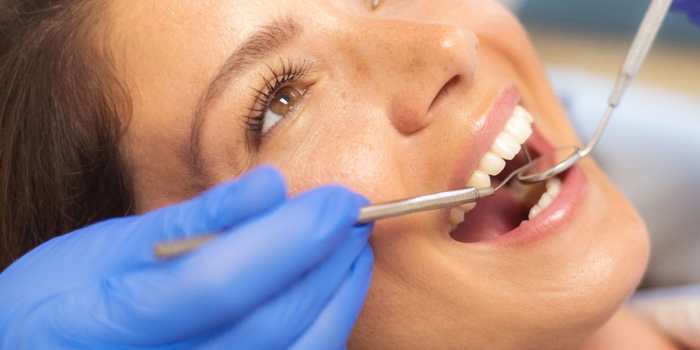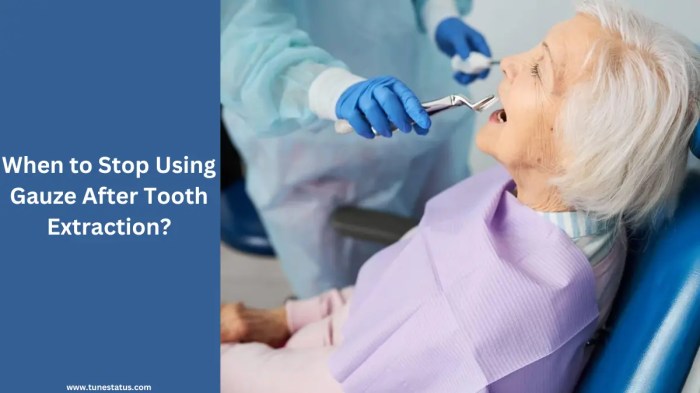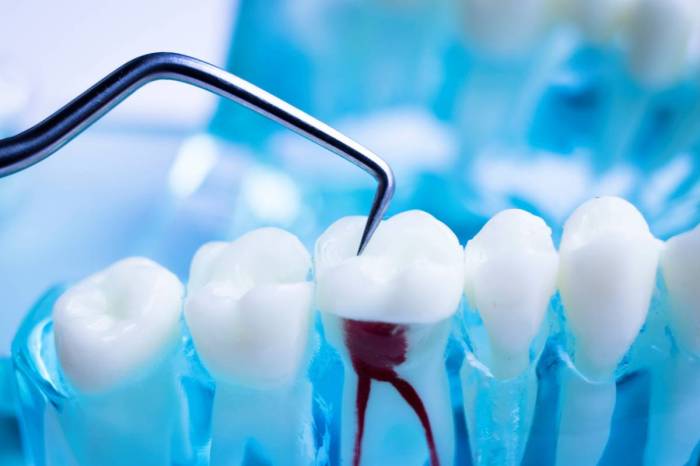How to avoid sinus lift? This in-depth guide unveils strategies for navigating the complexities of dental procedures. Imagine a world where intricate sinus lift surgeries are a distant memory, replaced by alternative approaches tailored to individual needs. This comprehensive exploration delves into the factors influencing the decision to bypass a sinus lift, from patient health considerations to surgical intricacies.
Understanding the nuances of sinus lift avoidance is crucial for informed decision-making. This guide provides a roadmap for patients and practitioners alike, empowering them to explore alternative options and achieve optimal oral health outcomes.
Introduction to Sinus Lifts
A sinus lift, a surgical procedure, is performed to augment the maxillary sinus, the air-filled space above the upper back teeth. This augmentation is crucial when insufficient bone height exists in the upper jaw to support dental implants. Common scenarios necessitating sinus lifts include replacing missing teeth, restoring damaged teeth, or supporting dental implants in patients with insufficient bone.
The procedure aims to create a suitable bone structure for implant placement, ensuring the long-term stability and success of dental restorations.Sinus lifts are classified into different types, each tailored to specific bone deficiencies and anatomical considerations. Understanding these distinctions is vital for effective treatment planning. These types include crestal, lateral, and combination sinus lifts. Crestal lifts involve raising the sinus membrane from the bone crest, while lateral lifts involve a more extensive procedure, raising the membrane from the lateral wall of the sinus.
Combination sinus lifts involve elements of both techniques, addressing more complex bone deficiencies.
Reasons for Avoiding Sinus Lifts, How to avoid sinus lift
A sinus lift, while often beneficial, may not be suitable for all patients. Several factors necessitate careful consideration and alternative treatment options. These factors include patient health, bone quality, existing dental conditions, and surgical risks. A thorough evaluation of these aspects is essential in determining the best course of action.
Factors Contributing to Sinus Lift Avoidance
| Factor | Description | Impact on Decision |
|---|---|---|
| Patient Health | Underlying medical conditions such as uncontrolled diabetes, certain cardiovascular diseases, or immune deficiencies can increase the risks associated with surgery. Patients with active infections or compromised immune systems may not be suitable candidates for sinus lifts, due to potential complications or delayed healing. Additionally, the patient’s overall health and ability to tolerate surgical procedures are considered. | Compromised health conditions pose a heightened risk, potentially requiring alternative treatments or delaying the procedure. |
| Bone Quality | The density and structure of the bone in the upper jaw significantly impact the predictability of sinus lift outcomes. Poor bone quality, characterized by insufficient bone density or porosity, may make the lift procedure less successful, potentially leading to complications like implant failure or bone resorption. The presence of significant bone defects or structural anomalies may also influence the decision to avoid a sinus lift. For example, if the bone has a significant amount of porosity or is abnormally thin, the likelihood of complications increases, leading to a less predictable outcome. | Low bone density or quality can hinder implant stability and increase the risk of complications. Alternative solutions, like bone grafting or other augmentation techniques, may be explored. |
| Existing Dental Condition | Certain existing dental conditions, such as significant periodontal disease or uncontrolled gum inflammation, can influence the decision to avoid a sinus lift. These conditions might increase the risk of infection or complications during or after the procedure. Moreover, the presence of significant dental decay or compromised tooth structures can influence the overall treatment plan, potentially impacting the need for a sinus lift. For example, severe gum disease may increase the risk of post-operative infection, which could jeopardize the success of the sinus lift and subsequent implant placement. | Pre-existing dental conditions can lead to increased surgical risks and complications, thus potentially necessitating a postponement or alternative approach. |
| Surgical Risks | Individual patient factors, such as smoking habits or a history of poor wound healing, can increase surgical risks. Also, the expertise and experience of the surgical team play a crucial role in the procedure’s success. The possibility of complications like bleeding, infection, or damage to adjacent structures should be considered. For example, a patient with a history of poor wound healing might be a less ideal candidate for a sinus lift, due to the possibility of delayed or problematic healing. | High surgical risk factors often outweigh the benefits of a sinus lift, leading to the consideration of less invasive or alternative procedures. |
Alternatives to Sinus Lifts
Minimizing surgical interventions is a crucial aspect of modern dental implantology. Various alternative procedures can be employed to address insufficient bone volume in the maxillary sinus region, avoiding the invasiveness of a sinus lift. These alternatives often involve different techniques, materials, and recovery timelines, necessitating careful consideration based on the specific patient needs and circumstances.
Bone Augmentation Techniques
Strategies for augmenting bone volume in the maxillary sinus region without a sinus lift encompass a range of approaches. These techniques aim to improve the bone structure and density necessary for successful dental implant placement. Bone grafting materials, including autografts, allografts, and xenografts, are strategically incorporated to promote bone regeneration. The selection of the most suitable material depends on factors such as the extent of bone loss, patient health, and cost.
Guided Bone Regeneration (GBR)
Guided bone regeneration is a widely used technique that facilitates bone growth in the desired area. A membrane, often made of biocompatible materials, is strategically placed to create a controlled environment. This containment prevents soft tissue from encroaching on the regeneration site, allowing for the optimal growth of new bone. The procedure often involves precise surgical placement and careful monitoring of the healing process.
Socket Preservation
Post-extraction socket preservation is a crucial procedure that aims to maintain the alveolar ridge integrity. This technique involves the immediate filling of the extraction socket with a suitable material, such as bone grafts or bone substitutes. This helps to prevent bone resorption and maintain the necessary volume for implant placement, thereby eliminating the need for a future sinus lift.
Immediate Implants
Immediate implant placement involves the insertion of implants directly into extraction sockets. This procedure necessitates careful assessment of the bone quality and quantity to ensure implant stability. While ideal for favorable cases, immediate implants may not be suitable for situations where bone resorption has occurred. A thorough evaluation of the patient’s condition is essential.
All-on-4 and All-on-6 Procedures
These procedures utilize multiple implants strategically placed to support a full arch of teeth. The placement of implants can sometimes minimize the need for a sinus lift by taking advantage of the natural bone structure. Careful planning and precise surgical execution are essential to ensure long-term stability and functionality.
Comparison of Alternative Procedures
| Procedure | Advantages | Disadvantages |
|---|---|---|
| Bone Augmentation | Preserves natural bone structure; suitable for various bone loss conditions; various graft options available. | Potential for graft rejection; longer healing time compared to some techniques; requires careful surgical technique. |
| Guided Bone Regeneration (GBR) | Promotes controlled bone regeneration; precise control over the healing process; maintains alveolar ridge integrity. | Requires meticulous surgical technique; potential for membrane exposure; potential for complications if not properly managed. |
| Socket Preservation | Maintains alveolar ridge height and width; prevents bone resorption; immediate intervention post-extraction. | Requires precise surgical execution; potential for complications if not properly executed; material selection is crucial. |
| Immediate Implants | Reduced treatment time; less invasive; potential for immediate function. | Higher risk of implant failure if bone quality is inadequate; demanding surgical technique; limited applicability. |
| All-on-4/All-on-6 | Supports full arch rehabilitation; can potentially reduce the need for sinus lift; suitable for extensive bone loss. | Requires advanced surgical planning; higher cost compared to other options; more complex surgical technique. |
Patient Factors Affecting Avoidance
Patient factors play a crucial role in determining the suitability and feasibility of avoiding a sinus lift procedure. These factors encompass a wide range of patient characteristics, influencing both the predictability of the outcome and the potential risks associated with alternative approaches. Careful consideration of these factors is essential for achieving optimal dental implant outcomes while minimizing complications.Understanding the interplay between patient-specific attributes and the decision-making process surrounding sinus lift avoidance is paramount.
Factors like bone density, the presence of existing medical conditions, and the patient’s overall health status can significantly impact the success rate of alternative techniques. Accurate assessment of these factors allows clinicians to tailor treatment plans, potentially avoiding a sinus lift and optimizing implant placement.
Bone Density and Structure
Bone density and structure are critical factors in the success of dental implants and, consequently, the avoidance of a sinus lift. A sufficient amount of bone volume and density in the maxillary sinus region is necessary to support the implant and prevent complications. Patients with insufficient bone density might require bone augmentation procedures, including sinus lifts, even if alternative techniques are considered.
Precise assessment of bone quantity and quality is essential, and this often involves advanced imaging techniques like CBCT scans. This allows clinicians to determine if alternative grafting techniques can effectively address bone deficiencies without the need for a sinus lift.
Presence of Pre-Existing Conditions
Certain medical conditions can influence the decision to avoid a sinus lift. Patients with conditions affecting bone metabolism, such as osteoporosis or Paget’s disease, might present a higher risk of complications associated with bone grafting procedures. The presence of uncontrolled diabetes or other systemic diseases can also impact the healing process and increase the potential for complications. A comprehensive medical history is crucial to evaluate these potential risks and determine if alternative approaches are suitable.
Patient Expectations and Preferences
Patient expectations and preferences significantly influence the treatment plan. Patients with realistic expectations regarding the time commitment, potential discomfort, and the aesthetic and functional outcomes are more likely to achieve successful results. Understanding the patient’s willingness to undergo alternative procedures, such as guided bone regeneration or socket preservation, is also vital. Open communication and transparent discussion about the various treatment options, risks, and benefits are key to informed decision-making.
Age and Oral Health Status
Age and oral health status can influence the choice of treatment. Older patients or those with compromised oral health may have a higher risk of complications, potentially impacting the feasibility of alternative procedures. Factors such as the presence of periodontal disease, previous oral surgeries, or smoking habits should be carefully evaluated to ensure the suitability of alternative techniques.
A thorough assessment of the patient’s overall health status is necessary to determine the optimal approach.
Impact of Patient Characteristics on Decision-Making
| Patient Characteristic | Impact on Sinus Lift Avoidance |
|---|---|
| High bone density and quality | Increased likelihood of avoiding a sinus lift, as alternative techniques may be sufficient. |
| Low bone density and poor quality | Reduced likelihood of avoiding a sinus lift; alternative techniques might not be sufficient to support implant placement. |
| Presence of osteoporosis or Paget’s disease | Increased risk of complications with bone grafting procedures, potentially limiting the feasibility of avoiding a sinus lift. |
| Uncontrolled diabetes | Increased risk of complications with any surgical procedure, including alternative techniques, potentially influencing the decision against avoiding a sinus lift. |
| Realistic expectations and preferences | Increased likelihood of successful treatment outcomes and patient satisfaction, even if a sinus lift is avoided. |
| Compromised oral health or advanced age | Potential for increased risk of complications with alternative procedures, potentially making avoidance of a sinus lift less favorable. |
Surgical Considerations for Sinus Lift Avoidance: How To Avoid Sinus Lift

Surgical planning for dental implant placement often necessitates a thorough assessment of patient-specific factors. A sinus lift procedure, while often necessary, is not always the optimal solution. Careful consideration of various surgical factors can influence the decision to avoid a sinus lift, prioritizing patient safety and achieving successful implant outcomes. Understanding these factors is crucial for maximizing the chances of a predictable and successful implant placement.Surgical conditions can present risks and complications associated with sinus lift procedures.
By identifying and addressing these conditions proactively, clinicians can often avoid a sinus lift altogether, opting for alternative strategies that minimize the surgical burden and maximize the likelihood of a positive outcome. This approach not only benefits the patient but also safeguards the clinician from potential complications.
Bone Density and Quality
Adequate bone density and quality are critical for successful implant placement. Insufficient bone volume or poor bone quality in the maxillary sinus region can significantly increase the risk of complications during a sinus lift procedure. This is due to the difficulty in achieving and maintaining graft stability in areas of low bone density, potentially leading to graft resorption or migration.
Furthermore, the risk of infection is also elevated in such cases. For example, a patient with severely resorbed maxillae may not have enough bone to support a sinus lift, necessitating alternative procedures like bone grafting techniques or using alternative implant placement strategies.
Sinus Pathology
Existing sinus pathologies, such as chronic sinusitis or other inflammatory conditions, can compromise the surgical environment and increase the risk of infection. The presence of these conditions can impair healing and increase the likelihood of complications during and after the sinus lift. These conditions might necessitate a delay in the sinus lift procedure or the exploration of alternative approaches.
For instance, a patient with active sinusitis would require treatment of the infection before proceeding with a sinus lift.
Adjacent Tooth Conditions
The health and stability of adjacent teeth play a significant role in the decision-making process. Significant periodontal disease, extensive caries, or other compromised adjacent tooth structures can lead to increased risk of infection, potentially complicating the sinus lift procedure. In such cases, addressing the adjacent tooth conditions first is often necessary before proceeding with the sinus lift. This preventive approach minimizes the risk of cross-contamination and promotes a healthier environment for healing.
For example, if a patient has multiple carious teeth, treating these before proceeding with a sinus lift is crucial.
Patient Medical History
Patient medical history, including bleeding disorders, uncontrolled diabetes, or immune deficiencies, can increase the risk of complications during and after the sinus lift procedure. Certain medications, such as anticoagulants, can also increase the risk of bleeding. Careful evaluation of the patient’s medical history is essential to identify any potential risk factors and to develop a treatment plan that minimizes the risk of complications.
In some instances, a patient with a history of severe allergies or certain autoimmune disorders may require a more conservative approach to avoid a sinus lift.
Diagnostic Considerations

Accurate diagnosis is paramount in determining the suitability of a sinus lift procedure or an alternative approach. A thorough evaluation, considering patient factors, dental radiographs, and clinical assessments, is crucial for selecting the most appropriate treatment plan. Proper diagnostics aid in identifying potential complications and ensuring optimal long-term outcomes. Failure to meticulously assess patient needs can lead to suboptimal results and potentially increase the risk of complications.
Diagnostic Imaging Techniques
A comprehensive understanding of the patient’s anatomy is vital for deciding on the most suitable treatment option. Radiographic assessments are essential in evaluating the maxillary sinus, the surrounding bone structure, and the relationship between the roots of the teeth and the sinus floor. These imaging techniques provide crucial information about bone density, volume, and the presence of any pathologies that could contraindicate a sinus lift procedure.
- Cone Beam Computed Tomography (CBCT): CBCT is a highly valuable diagnostic tool. It offers three-dimensional images of the maxilla, providing detailed visualization of the sinus floor, the alveolar bone, and the surrounding structures. This allows for precise measurements of bone height, width, and volume, enabling clinicians to accurately assess the feasibility of a sinus lift or the appropriateness of alternative procedures.
It also allows for identification of any anatomical variations or pathologies that may complicate the sinus lift procedure. For instance, a significant amount of bone resorption, the presence of a septal deviation within the sinus, or an existing pathology like a cyst could all influence the decision-making process.
- Panoramic Radiographs: Panoramic radiographs offer a broad overview of the entire maxilla and mandible. While less detailed than CBCT, they provide a preliminary assessment of the overall bone structure and can be useful in identifying potential issues that warrant further investigation. They are a valuable initial step in the diagnostic process, helping to identify possible contraindications for a sinus lift or highlighting areas requiring more in-depth analysis through CBCT imaging.
- Periapical Radiographs: These radiographs focus on specific areas of the jaw, providing close-up views of the roots of teeth and the surrounding bone. In the context of sinus lifts, periapical radiographs can help evaluate the relationship between the teeth and the sinus floor. Any signs of bone loss or other issues related to the tooth roots could influence the decision-making process, especially when considering the risks and benefits of a sinus lift procedure.
Clinical Assessments
Beyond radiographic analysis, careful clinical examinations are equally critical. This involves evaluating the patient’s medical history, oral health, and any existing dental conditions that could influence the procedure. A thorough assessment of the patient’s medical history is crucial to identify any systemic conditions or medications that could increase the risk of complications during or after a sinus lift.
- Patient Medical History: The patient’s medical history provides insights into any underlying conditions that might influence the decision-making process for a sinus lift or an alternative procedure. Conditions such as diabetes, cardiovascular diseases, or bleeding disorders, for example, might require specific precautions or adjustments in the treatment plan.
- Oral Health Examination: A thorough oral examination assesses the overall health of the teeth, gums, and surrounding tissues. It can identify potential issues like periodontal disease, infections, or other conditions that could affect the success of a sinus lift procedure. This includes careful examination for signs of infection, inflammation, or any oral health issues that could potentially complicate the procedure.
- Sinus Assessment: Clinical assessment of the sinus cavities involves evaluating sinus tenderness, swelling, or any signs of infection or pathology. This assessment is important to rule out any sinus problems that could potentially interfere with the procedure.
Diagnostic Summary Table
Post-Surgical Considerations
Post-surgical management plays a critical role in the success of any dental procedure, particularly when a sinus lift is avoided. Careful monitoring and adherence to post-operative instructions are essential for optimal healing and preventing complications. This phase extends beyond the immediate recovery period and encompasses the ongoing evaluation of the patient’s response to treatment.Post-surgical considerations in cases where a sinus lift is avoided focus on managing potential complications arising from the alternative approach.
The absence of a sinus lift necessitates specific post-operative protocols to address the unique challenges posed by the chosen treatment path. A diligent follow-up strategy is crucial to detect and promptly address any complications that may emerge.
Follow-up and Monitoring
Regular follow-up appointments are essential for evaluating the healing process and identifying any emerging issues. These visits provide opportunities to assess bone remodeling, evaluate the stability of the implant placement, and detect any signs of infection or inflammation. Thorough examinations, including radiographic imaging, are often necessary to monitor the progression of osseointegration and the overall success of the procedure.
Specific Post-Operative Care Recommendations
Strict adherence to post-operative instructions is critical for a successful outcome. These instructions typically include avoiding strenuous activities, maintaining a soft diet, and diligently managing pain and swelling. The use of prescribed medications, such as analgesics and antibiotics, should be meticulously followed as directed by the dental professional. Oral hygiene protocols are equally important to prevent infection.
Potential Post-Surgical Complications
Careful planning and execution of the surgical approach are paramount when a sinus lift is avoided. This meticulous approach minimizes the likelihood of complications. Nevertheless, some potential complications may still arise, requiring swift identification and management. Understanding these potential issues and the appropriate mitigation strategies can enhance the overall treatment outcome.
| Potential Complication | Description | Mitigation Strategies |
|---|---|---|
| Implant Failure | Insufficient bone support for the implant due to inadequate bone regeneration or resorption. | Thorough pre-surgical bone analysis, careful implant placement, and diligent post-operative monitoring. Bone grafting techniques might be considered if necessary. |
| Peri-implantitis | Inflammation and infection around the implant, potentially leading to implant loss. | Strict oral hygiene protocols, regular professional cleanings, and appropriate antibiotic therapy if infection develops. |
| Sinus Penetration | Unintentional penetration of the sinus membrane during the surgical procedure. | Precise surgical technique, meticulous monitoring of the sinus floor, and appropriate surgical instrumentation. Prompt recognition and management of any sinus membrane exposure are crucial. |
| Bone Graft Failure | The bone graft material does not integrate with the surrounding bone, leading to inadequate support for the implant. | Selecting appropriate bone graft materials, precise placement of the graft, and diligent post-operative monitoring. |
| Delayed Osseointegration | Slower than anticipated integration of the implant with the bone. | Thorough patient assessment for potential risk factors, and diligent monitoring of the healing process. Adjustments to the surgical approach or implant protocol might be necessary. |
Wrap-Up
In conclusion, avoiding a sinus lift is a multifaceted decision requiring careful consideration of patient factors, surgical risks, and alternative procedures. By thoroughly evaluating the individual needs and circumstances, informed choices can be made. This guide serves as a valuable resource for navigating the complexities of sinus lift avoidance, empowering both patients and practitioners to make the best possible decisions.
FAQ Summary
What are the common reasons for avoiding a sinus lift?
Sinus lifts are avoided when patient health, bone quality, or existing dental conditions pose significant risks. Surgical complications or the presence of sinus pathology can also lead to the avoidance of this procedure.
What are some alternative procedures to a sinus lift?
Alternative procedures, such as bone grafting techniques and specific types of dental implants, may be considered depending on the individual case. Each alternative procedure has its own advantages and disadvantages that should be carefully weighed before choosing.
What diagnostic tests help determine if a sinus lift is necessary?
Diagnostic tools such as CT scans, X-rays, and careful clinical examination help evaluate bone density, sinus structure, and other relevant factors. This data aids in deciding whether a sinus lift is suitable or if an alternative approach is more appropriate.
What are the potential complications of avoiding a sinus lift?
Avoiding a sinus lift may result in limitations in the final outcome of dental implant placement or restorative dentistry, potentially leading to future challenges. However, careful planning and monitoring can minimize these risks.
 Nimila
Nimila



